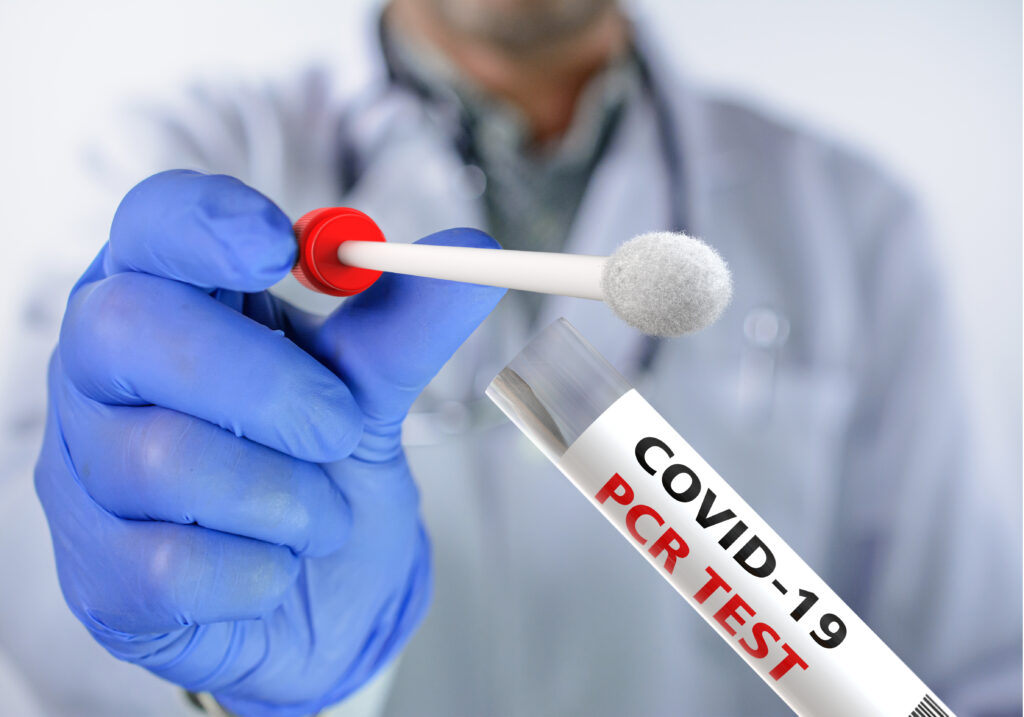- Home
- Health Center
- Health Info
- COVID-19 PCR Test Could Tell Us More. “CT” Explained.
Test
COVID-19 PCR Test Could Tell Us More. “CT” Explained.


Ever since the COVID-19 pandemic began, battles have raged over-testing: Which tests should be given, to whom, and how often? Now, epidemiologists and public health experts are opening a new debate. They say testing centres should report whether a person is positive but also a number known as the cycle threshold (CT) value, which indicates how much of a virus load does an infected person harbour.
What is Cycle Threshold (CT)?
- A simple way to understand cycle threshold (CT) refers to the number of cycles needed to amplify the viral RNA to a detectable level. In case you wish to know more:
- Standard tests identify SARS-CoV-2 infections by isolating and amplifying viral RNA using a procedure known as the polymerase chain reaction (PCR), which relies on multiple cycles of amplification to produce a detectable amount of RNA.
- The CT value is the number of cycles necessary to spot the virus; PCR machines stop running at that point.
- If a positive signal isn’t seen after 37 to 40 cycles, the COVID-19 test is negative.
What Do The CT Values Show?
Remember, samples that turn out positive can start out with vastly different amounts of virus, for which the CT value provides an inverse measure.
If a higher number of cycles is needed – hence a higher CT value – it means that the amount of virus, otherwise known as viral load, is low. This is because the virus is spotted only after many cycles.
So, Why Does It Matter?
CT value can be used as an estimate of transmission potential. Patients with a low CT value (high viral load) will be actively shedding the virus and likely to still be infectious, while patients with high CT value (low viral load) might be recovered individuals who are no longer infectious, as they are shedding very minute quantities of virus.
A high CT value, typically above 30, suggests that it is not a recent infection. Thus, the CT value also gives us a clue if one has recovered from COVID-19 infection.
| CT > 30 = Suggests Not a Recent Infection |
The Limitations of CT Value
- The same sample can give different CT values on different testing machines. Thus, CT values cannot be compared between machines.
- CT values may differ between different sampling methods, either through nasal and oropharyngeal samples collected from the same person.
- Other factors such as if the swab was carried out properly, the temperature during transportation and the time were taken to deliver the samples to testing could impact CT values.
Bottomline
Regardless of the debate on “CT”, early detection is most critical in breaking the viral transmission chain. If you’ve been exposed to someone with COVID-19 or begin to experience symptoms of the disease, seek medical care early.
Reference:
- SARS-CoV-2 Cycle Threshold: A Metric That Matters (or Not). American Association for Clinical Chemistry. (2020, December 3). https://www.aacc.org/cln/cln-stat/2020/december/3/sars-cov-2-cycle-threshold-a-metric-that-matters-or-not.
- Magleby R., Westblade L.F., Trzebucki A. Impact of SARS-CoV-2 viral load on risk of intubation and mortality among hospitalized patients with coronavirus disease 2019. Clin Infect Dis. 2020 doi: 10.1093/cid/ciaa851. Ciaa851.
- Bullard J., Dust K., Funk D. Predicting infectious SARS-CoV-2 from diagnostic samples. Clin Infect Dis. 2020 doi: 10.1093/cid/ciaa638.
Latest Health Info
Gut and Skin: How They Are Related?
Did you know that your gut and skin are connected? The gut-skin axis is the relationship between the microorganisms in ...
Ladies, Let’s Bring Out The Beauty In You
Ladies, Let’s Bring Out The Beauty In You As women juggle the demands of work, family, and personal health, taking ...
Healthy Weight, Happy Joints
How Does Weight Affect Knee Health? The Link Between Pounds And Pain Osteoarthritis (OA) involves the degeneration of joints, which ...



